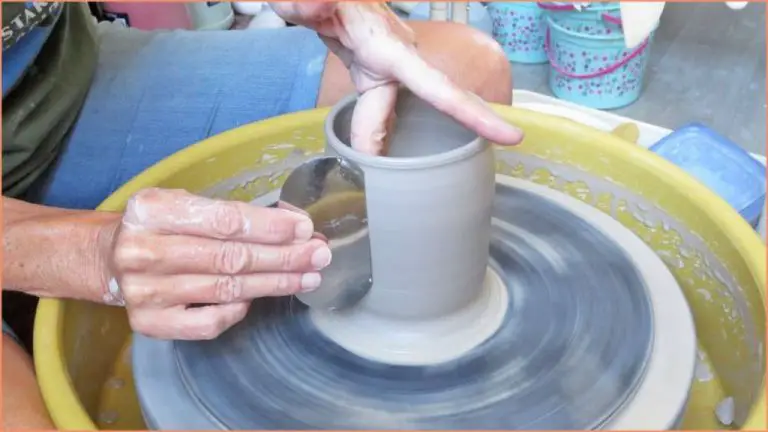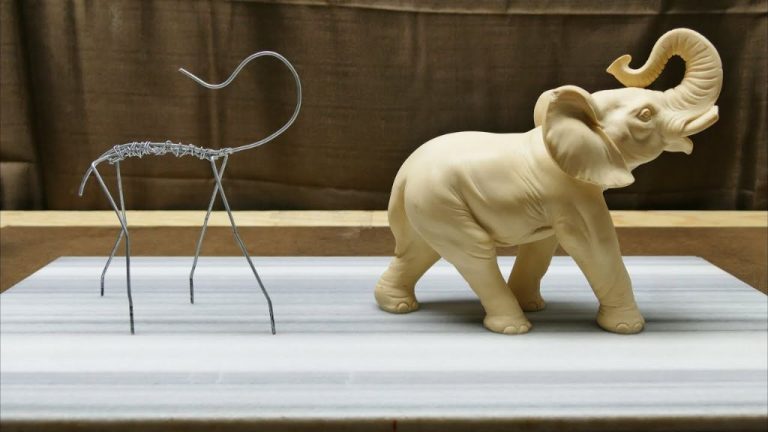What Materials Can Be Used To Make A Mold?
A mold is a hollowed out block or form that gives shape to liquid or molten material as it hardens. Molds are commonly used to create duplicate designs and shapes for industrial manufacturing and prototype casting. There are many different materials that can be used to make molds based on factors like the material being cast, desired mold longevity, cost, and required precision.
Some of the most common materials used for mold making include silicone, polyurethane rubber, polyester resin, plaster, concrete, wood, and metal. The purpose of this article is to provide an overview of these various mold making materials, their properties, advantages, and ideal applications. Understanding the capabilities of these materials will help identify the right one to use for a given mold making project.
Silicone
Silicone is one of the most popular and versatile materials for mold making due to its heat resistance, durability, flexibility, and ease of use. Silicone can withstand temperatures up to 500°F, making it ideal for casting resin, wax, plaster, concrete, and low-temperature metals (How to Make Silicone Molds: A Practical Guide).
Silicone molds are reusable and can last for years if properly cared for. The flexibility of silicone allows for easy demolding of complex and intricate shapes. Silicone picks up extremely fine details, perfect for reproducing textures and designs (How to Make Silicone Molds: A Practical Guide).
Limitations of silicone molds include higher cost compared to other materials and inhibition issues when casting platinum-cure silicone. Proper mold release should be used to prevent cured casts from sticking. Silicone also tears more easily than rubber molds.
Polyurethane Rubber
Polyurethane rubber is commonly used for mold making because it is durable and can capture intricate detail. Polyurethane rubbers like Poly 74-Series, 75-Series & 81-Series are designed specifically for mold making and casting applications.
The main advantage of polyurethane rubber is its ability to reproduce very fine details, making it well-suited for molds of detailed objects or molds that require an open pouring method. The material is also quite strong and durable, so molds can withstand repeated casting with abrasive materials like concrete. Polyurethane molds hold up better than silicone in certain cases.
However, polyurethane rubber does have some limitations. It can be sensitive to moisture and humidity, which can impact curing and mold quality. The materials also have a limited shelf life compared to some other rubbers. Proper storage and climate control is important when working with polyurethane. There are also safety considerations when handling uncured polyurethane.
Polyester Resin
Polyester resin is one of the least expensive mold making materials. According to Eplastics.com, polyester resin such as Weld-On #40 costs around $35 per gallon [1]. The inexpensive price makes polyester resin accessible for hobbyists and large commercial projects alike.
In addition to low cost, polyester resins offer very quick room temperature cure times of around 30 minutes. This allows parts to be molded and handled much more quickly compared to slower curing materials like epoxy. However, the fast cure comes at a cost – polyester resin is known for its brittle properties once fully cured and molded parts can crack easily under stress [2].
Plaster
Plaster is one of the most common materials used to make molds because it is inexpensive and easy to work with. Some key properties of plaster that make it suitable for mold making include:
- Porosity – Plaster is porous, allowing air and moisture to pass through. This allows plaster molds to “breathe”, preventing air bubbles from being trapped in castings.
- Inexpensive – Plaster is very affordable, especially compared to other mold making materials like silicone or urethane rubber.
- Fragility – Plaster molds are relatively fragile and prone to cracking over time with repeated use. Plaster molds require careful handling.
Plaster can be purchased at most art supply and hardware stores. It is mixed with water and poured into a mold frame or form. Plaster sets quickly, usually within 30 minutes, allowing fast mold creation. But the porosity and fragility make plaster best for temporary, short-run molds. For more durable production molds, materials like silicone are preferred.
Concrete
Concrete is a commonly used material for making molds due to its strength and heavyweight properties. Concrete molds are durable and can withstand multiple castings without wear and tear https://globmarble.com/concrete-stones/concrete-stone/. The cement and aggregate mixture produces a solid mold that can handle heavy liquid plasters and resins being poured into it. Concrete’s high compressive strength allows it to hold shape even under high pressure loads. This makes concrete ideal for casting large, solid objects or forms with intricate detailing that require a sturdy mold.
The downside is that concrete takes longer to cure compared to other materials so patience is required. Proper concrete curing is also essential to achieve maximum strength and hardness. Overall, the strength and stability of concrete makes it a go-to choice when a durable and heavyweight mold material is required.
Wood
Wood is a common material used to make molds due to its machinability and low cost (woodenmolds.com). Wooden molds can be easily shaped and carved using standard woodworking tools like lathes, mills, and routers. Species like basswood, poplar and maple are frequently used as they are relatively soft woods that are easy to machine.
The main limitations with wooden molds are durability and porosity. Wood can degrade over time from repeated exposure to molding materials. The porous nature of wood also means fine details can be lost as materials seep into the grain. Wood molds work best for shorter production runs where extremely high resolution is not required. Proper sealing and maintenance is required to maximize the mold’s lifespan.
Metal
Metal is a common material used for making molds due to its durability, conductivity, and ability to capture fine details (Metal Casting Supplies | PMCSupplies.com). Metals like aluminum, steel, iron, and copper can withstand high temperatures and pressures, allowing them to be used for casting metals, concrete, plastics, and other materials.
Metals are also excellent conductors of heat, allowing the mold material to cool and solidify evenly. Their conductivity speeds up the casting process and prevents defects in the finished product.
The downside to metal molds is their high expense compared to materials like silicone or resin. The process of CNC machining or laser cutting metal to create a mold can be costly. However, metal molds have a long lifespan and can produce numerous castings before wearing out.
3D Printed
3D printing can be used to create custom molds that are highly tailored to the desired end product (Source). The key advantage of 3D printed molds is the ability to customize the mold design and iterate rapidly. Complex geometries and details can be incorporated that may be difficult or impossible with traditional mold making techniques.
However, 3D printed molds also have some limitations. The materials used in desktop 3D printing tend to have lower heat resistance than traditional mold materials. This can limit the casting materials and processes that can be used. The surface finish of 3D printed molds is also not as smooth as machined metal molds. Post-processing may be required to improve the finish. Strength and durability of 3D printed molds is also generally lower than machined metal molds, especially for high volume production runs (Source).
Conclusion
There are many great options when it comes to choosing materials to make a mold. The key takeaways are:
- Silicone is flexible, durable, and can capture fine detail, making it one of the best overall mold making materials.
- Polyurethane rubber can be rigid or flexible depending on the formulation, and works well for molding concrete.
- Polyester resin is affordable and can be reinforced with fiberglass for rigid molds.
- Plaster is inexpensive and good for simple, single-use molds.
- Concrete makes durable rigid molds that are good for casting concrete.
- Wood and metal can be used as mold frames or to create custom mold shapes.
- 3D printing allows complete customization and iterative mold design.
For most applications, silicone or polyurethane rubber will provide the best results. Rigid molds made from polyester resin, plaster, concrete, wood or metal may also be suitable depending on the material being cast and level of detail required. For very complex molds, 3D printing provides the ultimate in customization and precision.



